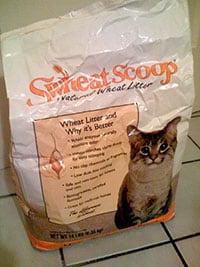By Michael Banks
 Cat litter and radioactive waste – not a combination you would normally expect to come across (although some cat owners may disagree).
Cat litter and radioactive waste – not a combination you would normally expect to come across (although some cat owners may disagree).
But a report by the US Department of Energy has squarely blamed kitty litter for the explosion of a single drum of nuclear waste – dubbed “68660” – that burst open at the Waste Isolation Pilot Plant (WIPP) in New Mexico in February 2014.
A year-long investigation by a nine-member panel – led by David Wilson of the Savannah River National Laboratory – has concluded that the incident was caused by the use of the wrong brand of feline litter.
As cat litter is highly absorbent, for years it has been used to help keep nuclear waste contained. Indeed, each barrel of waste at the WIPP is filled with about 26 kg of the stuff.
However, workers at Los Alamos National Laboratory – where the barrel originated – switched from inorganic cat litter to organic litter. In particular, they switched to using the Swheat Scoop brand.
Swheat Scoop is made from natural products and contains wheat. As the cereal grain contains carbohydrates, it provided fuel for a chemical reaction with the disposed metal nitrite salts. This exothermic reaction increased the temperature in the drum, eventually producing enough heat to cause an explosion.
“Experiments showed that various combinations of nitrate salt, Swheat Scoop, nitric acid and oxalate self-heat at temperatures below 100 °C. Computer modelling of thermal runaway was consistent with the observed 70-day birth-to-breach of drum 68660,” the 277-page report states.
Swheat Scoop is described by the firm as “natural clumping litter” that is “earth-friendly, 100 per cent biodegradable and safe for everyone in the house”. Unless, of course, you mix it with nuclear material.



